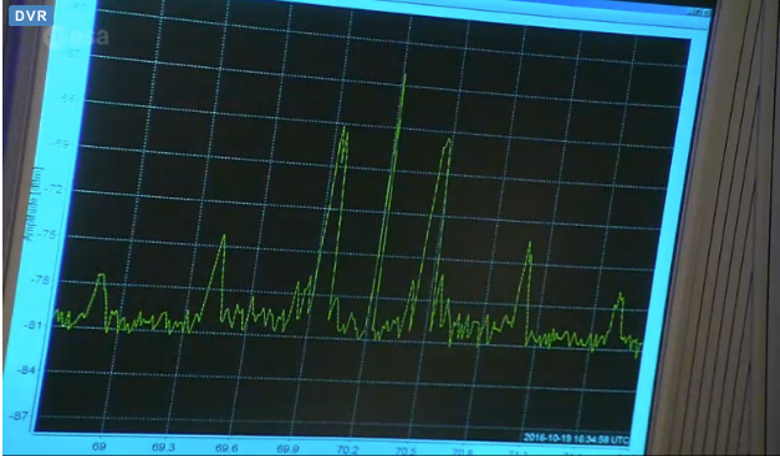Things are looking good for ESA’s ExoMars 2016 mission as the eagerly awaited signal confirming that the TGO had successfully entered Mars’s orbit was received by mission control. News on Schiaparelli is also looking good, however it will be a couple of hours before complete confirmation of its arrival on the martian surface is also reported as hopefully being successful.
Scientists using the the Giant Metrewave Radio Telescope (GMRT) in India and a fleet of NASA and ESA orbiters around Mars have all been listening keenly to Schiaparelli’s on-board UHF (ultra-high frequency) radio that it is using to transmit signals during the entry, descent and landing. UHF is usually what's used to transmit television signals on Earth, but rather handily it also works great for short-range communication between spacecraft at Mars.
Initial signals have been received via GMRT indicating that Schiaparelli’s parachute has been deployed and that the lander is safely en route to the planet, but no signal indicating touchdown has been received yet. This is not completely unexpected as only a very faint signal will be received at the GMRT.
Schiaparelli, which has been free-falling towards Mars since its successful separation from the TGO on Sunday, was programmed to wake up at about 15:37 CEST ready for its landing demonstration mission. At around 16:48 CEST, according to nominal timeline, Schiaparelli should have switched off its thrusters to avoid touching the surface with the heat plumes from the thrusters, or hitting a rock on the surface while the engines are still on. After the thrusters have been turned off, Schiaparelli should proceed to touchdown on the surface of Mars.
Schiaparelli does not carry much on board but it is equipped with a a small science payload called DREAMS, that should have taken measurements of the electrical properties of Mars’s atmosphere – the first time this has ever been done – as the lander descended to the surface. DREAMS, which stands for Dust Characterisation, Risk Assessment, and Environment Analyser on the Martian Surface, will only operate for a few days but during that time, it will be used to measure local weather conditions at the landing site, such as humidity, temperature, dust opacity, pressure, wind speed, and wind direction.
Meanwhile, the Trace Gas Orbiter (TGO), if confirmed to be in the right orbit, will now complete a year of complex aerobraking manoeuvres to circularise its orbit and its science mission will start at the end of 2017. It will also act as a relay for ESA’s ExoMars rover when it heads to the Red Planet in 2020.











